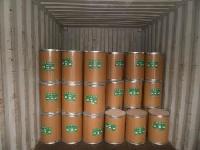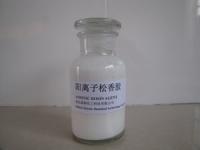Rosin, with the chemical formula C20H30O2, has the CAS number 8050-09-7. It is a solid substance that appears as a transparent to amber-colored solid with a characteristic odor. Rosin is derived from the resin of pine trees and is commonly used in various industries. Its basic structure consists of a complex mixture of organic compounds, primarily composed of resin acids. This compound is insoluble in water but soluble in organic solvents such as alcohol and ether. Rosin is generally considered to be safe for use, but prolonged or repeated exposure may cause skin irritation or allergic reactions. It is important to handle rosin with proper protective measures to avoid any potential health risks.
Applicable Fields
Adhesive: Rosin is widely used as an adhesive in various industries. Its purpose in this field involves its ability to provide strong bonding properties. The mechanism of action in adhesives involves the formation of intermolecular bonds between the rosin and the surfaces being bonded, resulting in a durable and reliable adhesive bond.
Musical Instruments: Rosin is commonly used by musicians to enhance the friction between the bow and the strings of stringed instruments such as violins, cellos, and double basses. Its purpose in this field involves its ability to increase the grip of the bow on the strings, producing a clearer and more resonant sound. The mechanism of action in musical instruments involves the rosin particles adhering to the bow hair, creating friction that allows the strings to vibrate effectively.
Storage
Conditions: Store in a cool and dry place, away from direct sunlight.

|

|

|
![Rosin [CAS] 8050-09-7 Food Additives](https://imgen3.guidechem.com/simg/images/2023/8/25/192123101702440.jpg)
|

|

|

|

|

|

|

|

|